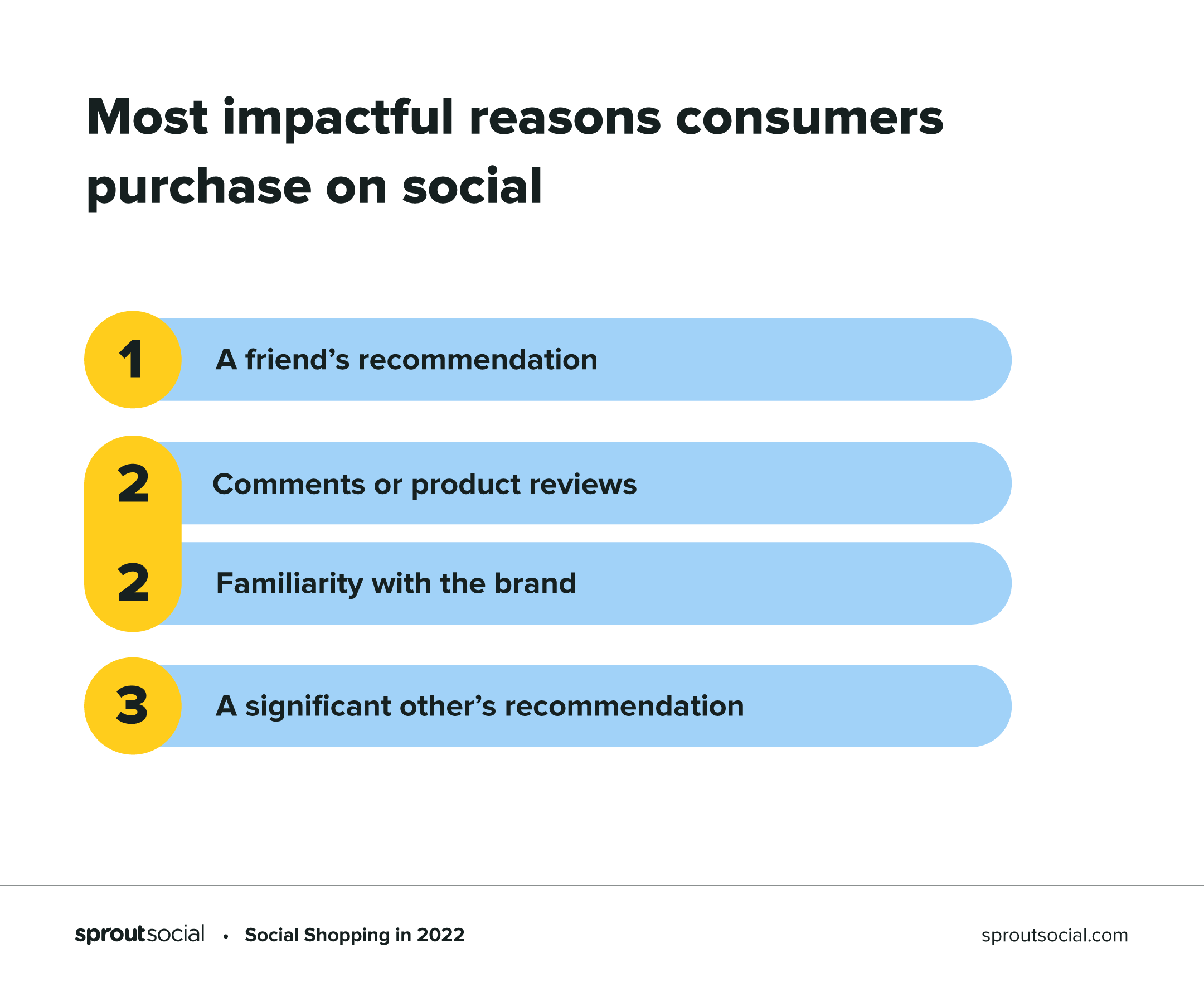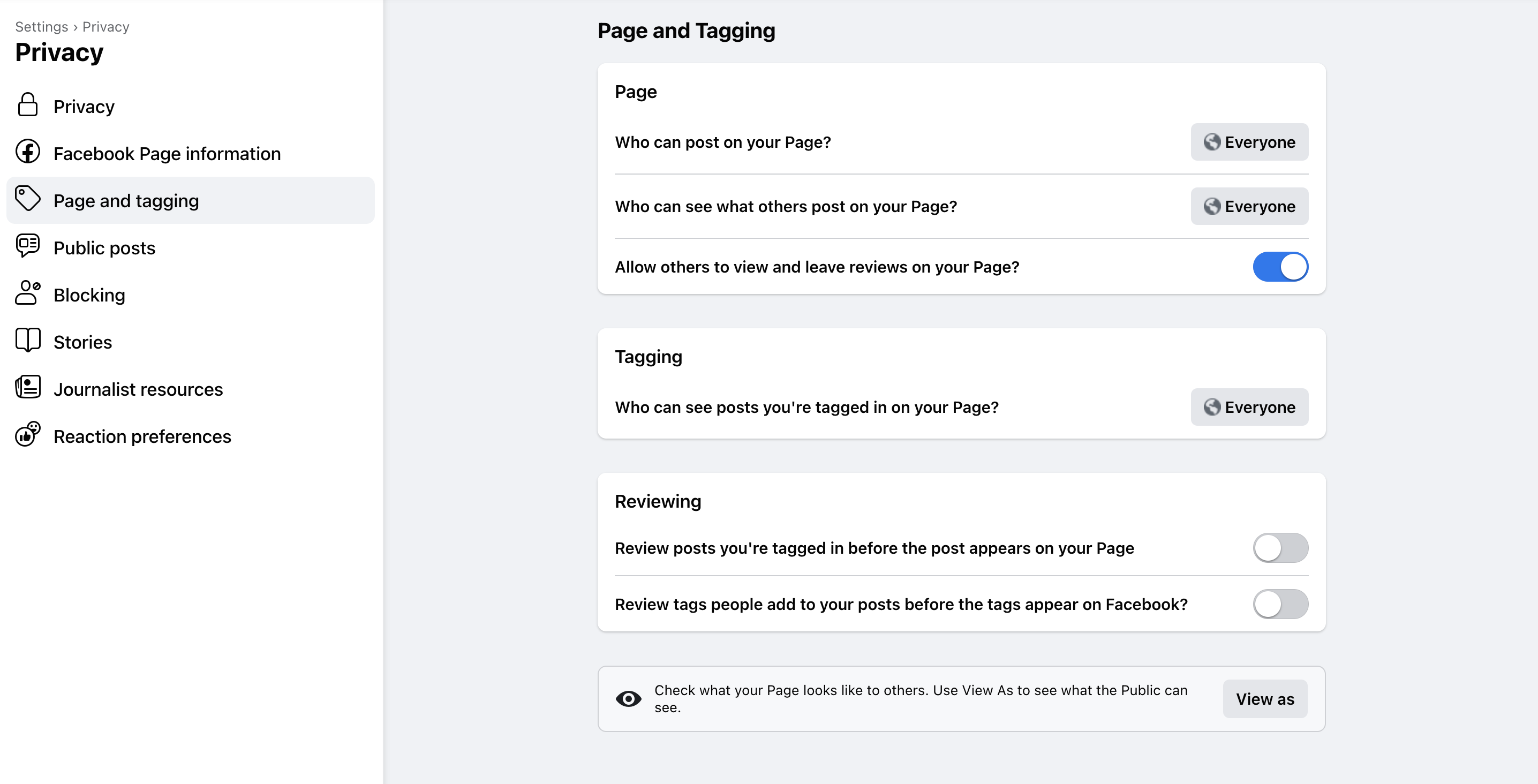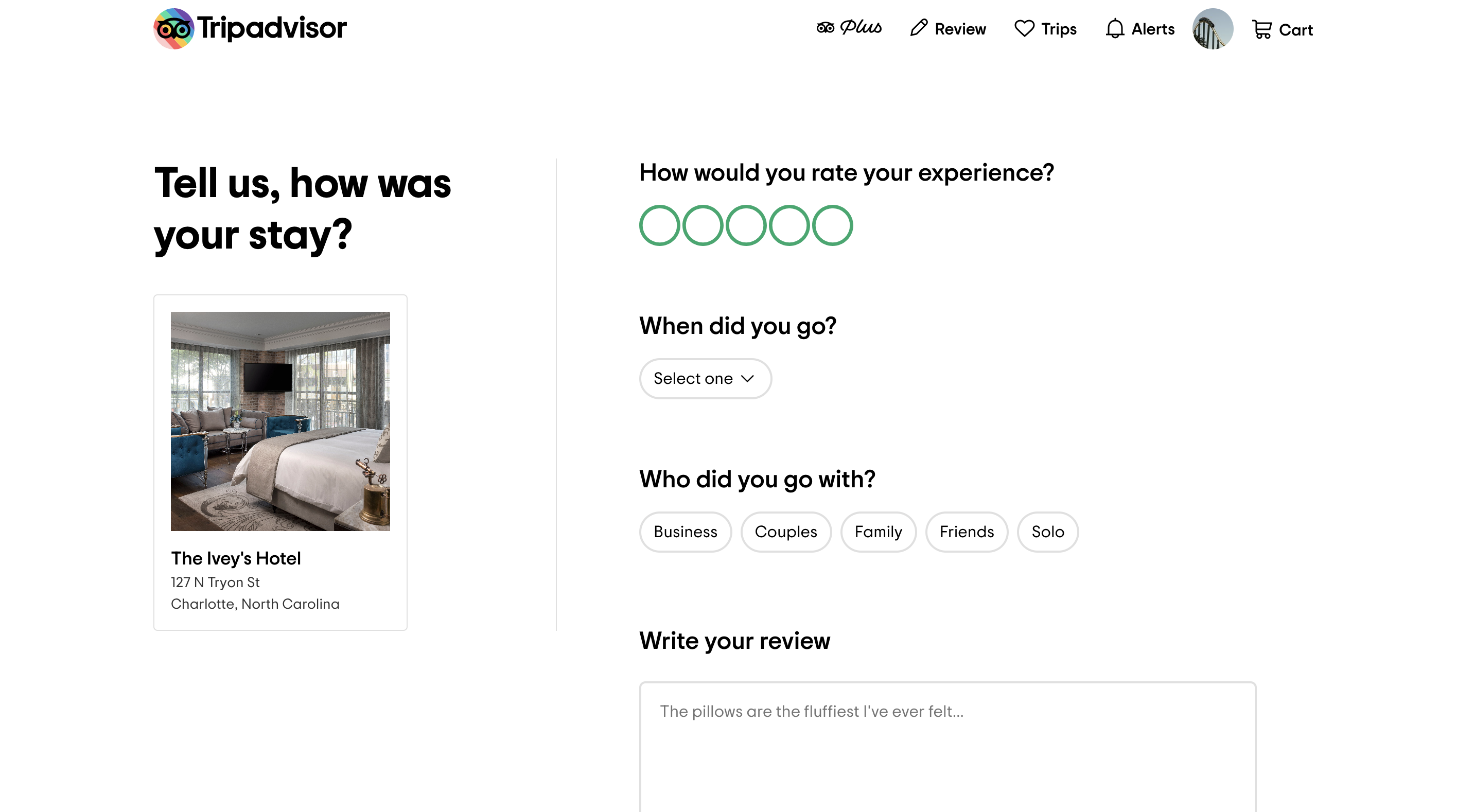Reviews are important. Think of your own shopping experiences: when you’re comparing products, do you read reviews?
This is why learning how to ask for reviews is key in running a business. You need that social proof that shows potential customers that others have already been satisfied with your products or services.
Enter online review management—the process of asking for, monitoring and managing your online reviews. Throughout this article, we’re going to talk more about why asking for reviews is so important and how you can do so effectively.
Let’s dig in.
Why should you ask for reviews?
According to the 2023 Power of Reviews survey, 98% of customers say they’re essential to their purchasing decisions—and 45% of customers say they won’t even purchase a product if there are no reviews for it. Reviews help make your business more credible and can increase the likelihood that people want to buy from you.
Here are a few more key reasons that increasing the number of reviews you get is always a positive for your business.
Increase social proof and trust among customers
Ninety-one percent of consumers trust reviews when they’re making purchase decisions and 82% trust reviews as much as they do personal recommendations from family and friends. They’re one of the most impactful reasons people shop on social.

This is because reviews are a form of social proof—a marketing psychology idea that says people are more likely to copy or emulate the behavior of others. So reviews, ratings, recommendations and even UGC or influencer content are all types of social proof.
Higher chance of sales
More reviews can also increase your sales and revenue. One study by Spiegel Research Center discovered that products with five or more reviews are 270% more likely to be purchased than products with no reviews.
The same study also discovered that reviews can increase a product’s overall conversion rate. Lower-priced products see a 190% increase in conversions when they have reviews and higher-priced products see a 380% increase in conversions.
Better brand reputation
Having a lot of reviews can improve your brand’s online reputation and inform new potential customers. Shoppers will see that your brand has helped others solve a problem and use it as a solution of their own.
However, if your brand has a solid reputation and positive reviews on its other products, newer products or products with fewer reviews are still likely to have a positive perception. Sixty-three percent of consumers say they’ll purchase a product that has no reviews if the brand and its other products have a good reputation.
Gain actionable product feedback
While we’ve been focusing on how reviews can improve your standing with future customers, they’re also key in understanding how your business is doing. If you’re being inundated with negative reviews, that’s a big sign that something needs to change.
However, even positive or neutral reviews can have great feedback for improvement. Pay attention to what people have to say in their reviews and make changes for the better based on that voice of the customer data.
Improve SEO for your local business
Getting reviews is also extremely helpful in local SEO efforts. One Semrush study shows that brands with more reviews and higher ratings appear higher in Google Maps results. Increasing your number of reviews can increase the chances that locals can find your business.
How to ask for reviews by specific channels [+ examples]
Not sure where to get started with asking for reviews? Let’s first start with how you can generate a link or make a call-to-action for each specific channel that you might be looking to get reviews on.
Google Business profile
Every business should have a Google Business profile. This is what appears in search results with links to your website, information on opening hours, a menu if applicable, address information and so much more. Including—customer photos and reviews.
As Google Business profile is a great place to start when asking for reviews. However, it’s one thing to ask customers to go review you on Google. It’s another to share a direct link to your profile so they don’t have to hunt it down themselves.
To do that, follow these steps:
1. Go to your Google Business profile. The easiest way to do this is by Googling “my business.” Your profile will appear at the top of search results.
2. Click Promote, then click Ask for reviews.
3. Grab the direct URL to share with your customers.
Facebook Pages
To get more Facebook Page reviews, you first need to make sure that you’ve turned on the option to receive reviews. To do this, head over to your Facebook Page in management mode.
1. Click Settings from the left sidebar.
2. Click Privacy from the settings menu.
3. Go to the Page and tagging dashboard.

4. Make sure the option to allow others to view and leave reviews is turned on.
5. Copy your Facebook Page URL to send customers to your Page to leave a review.
TripAdvisor
Follow these steps to lead your customers directly to the review option on TripAdvisor:
1. Go to your TripAdvisor page.
2. Scroll down to the review section.
3. Click the Write a review button.
4. Copy the URL of the page that appears and share it with your audience.

You can choose to share the URL to your direct TripAdvisor page, but this option puts users exactly where you want them—where they can leave their own rating and review.
Yelp
Yelp actually has in their content guidelines not to ask for reviews. So this is a bit of an oddball one, here. However, you can ask customers to check in on Yelp—and then Yelp will automatically ask them to leave a review as well as send an email a day or so later asking you to review the business.
You can also share or embed existing Yelp reviews on your website or social media platforms. When other customers see a Yelp review, they may be more inclined to leave their own Yelp review.
Glassdoor
Glassdoor is a review site for employers and employees, but is still a valuable site to get reviews on. And to make things easier on you, this review site has its own “Request Reviews” feature. Follow these steps:
1. Head over to the Employer Center.
2. Click on Community Reviews.
3. Click on Request More Reviews from the top menu.
4. Choose to send Customized Emails or a Shareable Link.

Glassdoor’s tool enables you to create trackable links and campaigns so you can see how many people have clicked on the link.
App stores
If you’re looking to increase your app store reviews, consider using the in-app or pop-up message APIs that enable you to create messages within your app asking for reviews. This allows customers to review your app without even having to leave it.
Your website
Want to increase reviews on your website? Getting more product reviews can help customers feel better about hitting “Add to cart.” You can do this using a few different avenues:
- Pop-ups on your website
- SMS prompts
- On the phone
- In person
- Via email
Doing so via email and SMS are easy as you can set up automated responses once a customer has made a purchase. These alerts will go out after someone purchases a product asking them to review it.
Here’s an example of what this might look like:

Create an effective strategy to ask for reviews [+ examples]
Most brands hope that their customers will love their product or service enough to leave glowing reviews organically. But if you’re not actively seeking out reviews, customers may move on and forget to write them. For this reason, it’s important to incorporate intentional strategies to ask your customers for reviews.
If you’re unsure how to ask for customer reviews, here are some strategies you can use to encourage your customers to provide reviews more frequently.
1. Make it as easy as possible to leave reviews
The easier it is for your customers to leave their review, the more likely they are to do it. Creating a template or form that the customer can quickly fill out will lower the barrier and streamline the process. While you want the review to be authentic, creating a streamlined process makes it easier for your customers to share their thoughts.
A lot of brands, like Expedia, create forms that give customers the option to rate different parts of the experience. All it takes is a few clicks to rate and review various aspects of their trip.

Just make sure you have a clear call-to-action for leaving a review in order to increase the chances your customers actually do so.
2. Reach out to power users or repeat customers
One of the easiest ways to get customer reviews is to reach out to customers who you already know enjoy your products.
For e-commerce or B2C brands, follow up with customers who have made multiple purchases. For B2B brands or SaaS companies, take note of the people who continually use your service or software and reach out to these power users for feedback or even participation in case studies.
This outreach can be as simple as sending an email expressing your appreciation for their continued support. In this email, ask if they are willing to leave a review and create a direct link for them to use to review a product they purchased.
3. Offer an incentive
Sometimes people need an extra push to share their experiences. After all, people are busy and leaving a review or testimonial can be time-consuming. Show your customers that you value their time and feedback by offering a small incentive to anyone who leaves a review. This can include things like a small discount on their next purchase, a freebie or some sort of shoutout.
G2 implemented this strategy by emailing their users a request to leave a review in exchange for an Amazon gift card.

According to BrightLocal’s 2023 Local Consumer Review Survey, 26% of consumers were asked to leave a review in exchange for a discount of some sort in 2022. This is up from 15% in 2021, proving that offering an incentive is a popular strategy that works.
Keep in mind, though, that incentivizing reviews is against the policy of some review sites—like Google and Glassdoor—so you may just want to use this for product reviews on your website and other domains that you own.
4. Share user-generated content on social media
Keep an eye out on social media for people who are already, organically talking about your brand. If your brand receives a lot of user-generated content, highlight those customers by sharing their posts with your audience. It demonstrates that you have fans who value your product enough to talk about it on their own.
Here’s an example of Loom sharing a tweet from one of their customers:

You can show your appreciation for your loyal customers by replying to them on social media and sharing their messages on your accounts. You may also consider creating a branded hashtag and encouraging your audience to share their experiences using that hashtag.
5. Create memorable moments on social media
Going above and beyond with your customer service is one way to increase the chances of reviews and shoutouts coming your way organically. Chewy gives us a great example of this—by treating families and their pets exceedingly well, customers take time out of their days to tout the brand on social media.
Here’s one example of a Tweet sharing a positive experience with the brand:

And here’s another example sharing how Chewy reacted when hearing that a family’s beloved pet passed away:

By creating memorable experiences for your customers, they’re going to be much more likely to want to share of their own accord.
6. Engage and respond to reviews
Whether they’re Google reviews, social media reviews or website or product listing reviews, businesses need to acknowledge the feedback received from customers. Not only does this make your existing customers who have left reviews feel heard, it can make others feel more comfortable leaving a review, knowing your business will actually see and respond to it.
7. Use a review management tool
If you’re not sure how to track and manage your reviews, Sprout’s review management tool can help with each of the first six channels mentioned in the last section.
The tool enables you to manage and monitor reviews across multiple business pages. The Reviews dashboard makes it easy to keep track of all of your review platforms. Easily manage your Google Business, Facebook, TripAdvisor and other reviews, all from one easy-to-use dashboard.

Using a review management tool that helps you integrate all of your review platforms can save time and keep you organized. It will also make it easier to respond to reviews and track where they come from. Knowing where your reviews most frequently come from can help create a more streamlined strategy when asking for them in the future.
Start gathering more customer reviews today
Don’t be shy—start asking for reviews today! Take note of the various tactics you can try to increase the number of reviews your brand receives.
Customer reviews have the power to propel your brand’s reputation forward and build trust with your audience. Whether you’re collecting reviews on your website, social media or another tool, these strategies can help streamline the process.
For a more in-depth look at how reviews can impact your business, download our complete guide on Building a Better Reputation with Reviews.
The post How to ask for reviews effectively [+ examples] appeared first on Sprout Social.